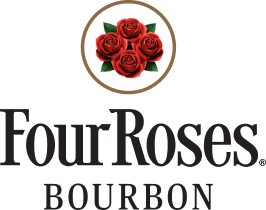The Resurgence of Bourbon
blog | 01/12/2017

The Resurgence of Bourbon
We asked our friend and journalist, Maggie Kimberl, to be a guest blogger for January Straight Up. Maggie used this opportunity to discuss the resurgence of Bourbon and Bourbon tourism. If you’d like to read more from Maggie, and we recommend you do, check out some of her other work in The Whiskey Wash, The Alcohol Professor and Whisky Magazine.
The Resurgence of Bourbon
by Maggie Kimberl
Bourbon is like a boxer, knocked around, picking itself back up, and almost being knocked out completely before making a victorious comeback in the final round. We could easily be living in a world without Bourbon if not for the camaraderie and perseverance of the people of the Kentucky Bourbon distilleries of the past. Distillers, warehouse managers, chemists and business people worked tirelessly not only to make Kentucky Bourbon whiskey the gold standard, but also to kick-start fledgling ideas like Bourbon tourism and consumer education.
We think of Bourbon tourism as something that has only happened within the last decade or so, but places like Four Roses and Old Taylor were built to be showpieces. We think of consumer education about Bourbon as something that has really just become popular in recent years, but master distillers like Jim Rutledge, Jimmy Russell, Elmer T. Lee, and Booker Noe were pounding the pavement decades ago before anyone was really paying attention like show promoters laying the groundwork for the next big event. It was through their hard work that Kentucky Bourbon rose from a near knockout to take the championship title.
Today’s Bourbon connoisseur has benefitted greatly from the foresight and creativity of the Bourbon forefathers. They built the industry to last, and that’s no easy task when you’re talking about a product that is typically aged anywhere from four to 20 years. During Prohibition, Bourbon was sold as medicine, which kept the industry alive. During World War II, distillers retrofitted their stills to produce ethanol for the war effort, another turn-on-a-dime move that kept them in business. In the 1960s, 70s, and 80s when clear spirits reigned, distillers worked tirelessly to open up foreign markets.
The Bourbon industry is one of the few industries where you can still start off working in a warehouse or laboratory and end up master distiller. In fact, the folks who rose through the ranks are often proud of this fact. Four Roses Master Distiller Brent Elliott is one such person who started in the lab, learning the ropes on the job. His rise to the title of Master Distiller has been a natural transition to the next generation of whiskey masters.
So, what does the future have in store for the Bourbon industry? There are those who say the bubble is going to burst and distilleries are going to be stuck with rickhouses full of Bourbon they can’t sell. If history is any indication, the Bourbon industry will carry on just fine. After all, there are still newly emerging markets like India and China just waking up to the goodness that is Kentucky Straight Bourbon Whiskey. Bourbon tourism is drawing visitors to Kentucky from all over the world – I have personally met people from England, Australia and Canada on the Kentucky Bourbon Trail. Whiskey books are being written at a breakneck pace, and they are flying off the shelves at the same speed. Kentucky Bourbon is going for Olympic Gold right now. There is much about which we can be hopeful.




